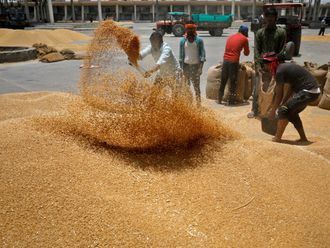New Delhi: India’s Supreme Court has said that three senior members of the ruling Bharatiya Janata Party (BJP) should face trial over the demolition of the Babri mosque a quarter of a century ago. Here are five things to know about the long-running dispute.
What is the dispute about?
Hindus and Muslims have for decades been bitterly divided over the 16th-century Babri mosque in Ayodhya, a city in India’s northern Uttar Pradesh state. Hindus believe the mosque was built on the ruins of an ancient temple dedicated to their deity Ram. Tensions boiled over in 1992 when a Hindu mob tore the mosque to the ground, sparking religious violence that left more than 2,000 dead across India.
How long has it been a flashpoint?
Hindus believe a Muslim conqueror razed the Ram temple in the 1500s to make way for the mosque. The British erected a fence in the 19th century to separate places of worship so that Muslims could worship in the inner court and Hindus in the outer. But in 1949, idols of Lord Ram appeared inside the mosque, allegedly placed by Hindus. Muslims objected and both parties went to court, beginning a decades-long legal fight over the right to worship on site.
Who was behind its destruction?
In 1984, a group of hardline Hindus formed a committee to “liberate” the birthplace of Ram and build a temple on the disputed site. The movement was headed by LK Advani, a senior figure in the ruling BJP, now headed by Prime Minister Narendra Modi. Its supporters began travelling to the site to demand a temple be built, and even today the cause remains a rallying cry for Hindu nationalists.
When did tensions escalate?
On December 6, 1992, a huge Hindu crowd converged on the mosque site to symbolically lay the first stone of the new temple. The 200,000-strong mob broke through police cordons, first smashing three domes to rubble before reducing the rest of the historic mosque to ruins. The destruction triggered some of the worst religious riots since India’s bloody partition in 1947. The violence culminated in 2002 when a trainload of Hindu activists were burned alive as they returned from Ayodhya, sparking retaliatory riots in Gujarat state that left upwards of 1,000 mostly Muslims dead.
Where does it stand legally?
In 2002, three High Court judges began hearings to determine who could lay claim to the contested site. An important ruling came in 2010 when a High Court ruled that Muslims and Hindus should split the site — albeit unevenly, with Hindus granted the lion’s share. A Muslim group appealed and the Supreme Court in 2011 overturned the lower court’s ruling, leaving the issue unresolved.











